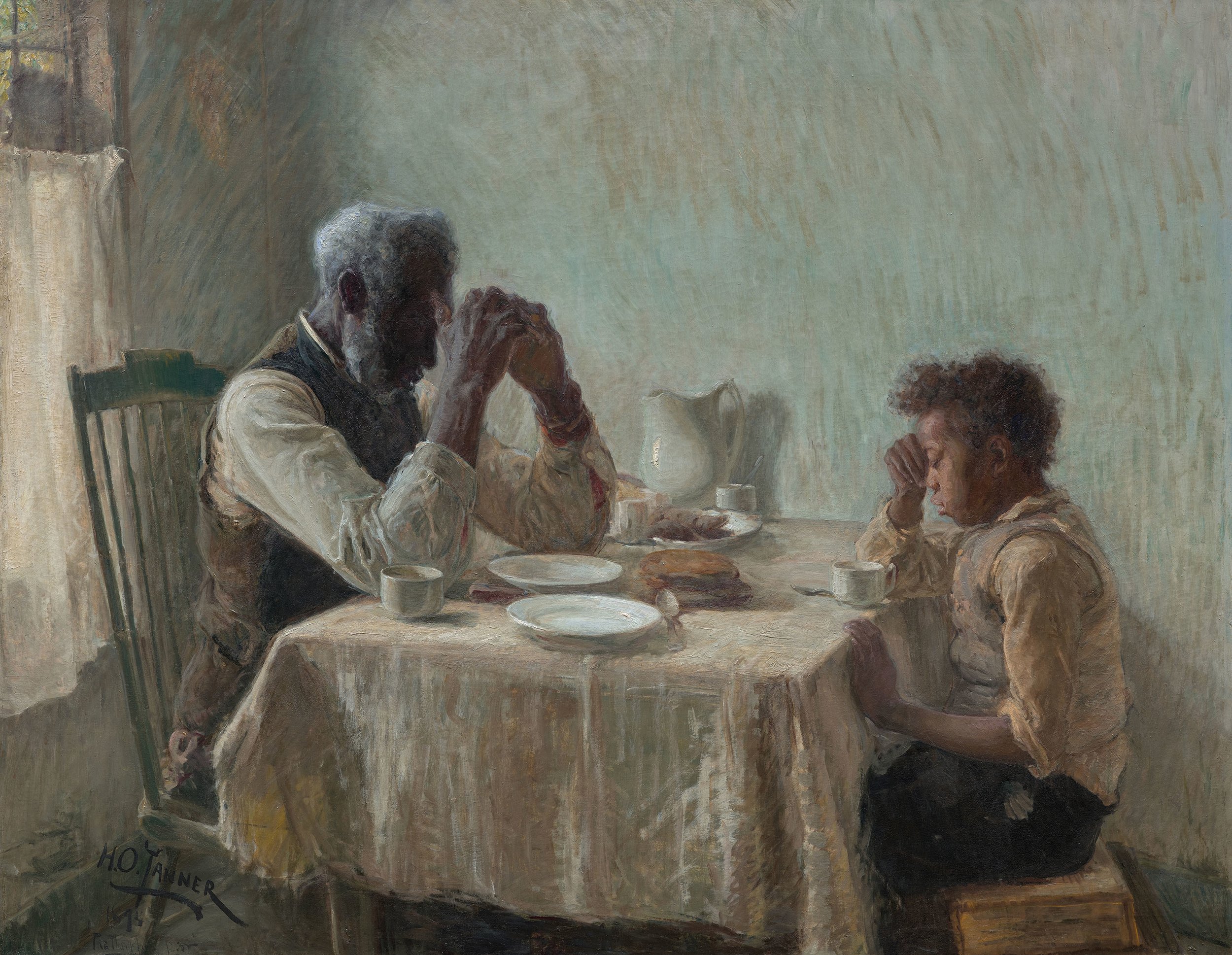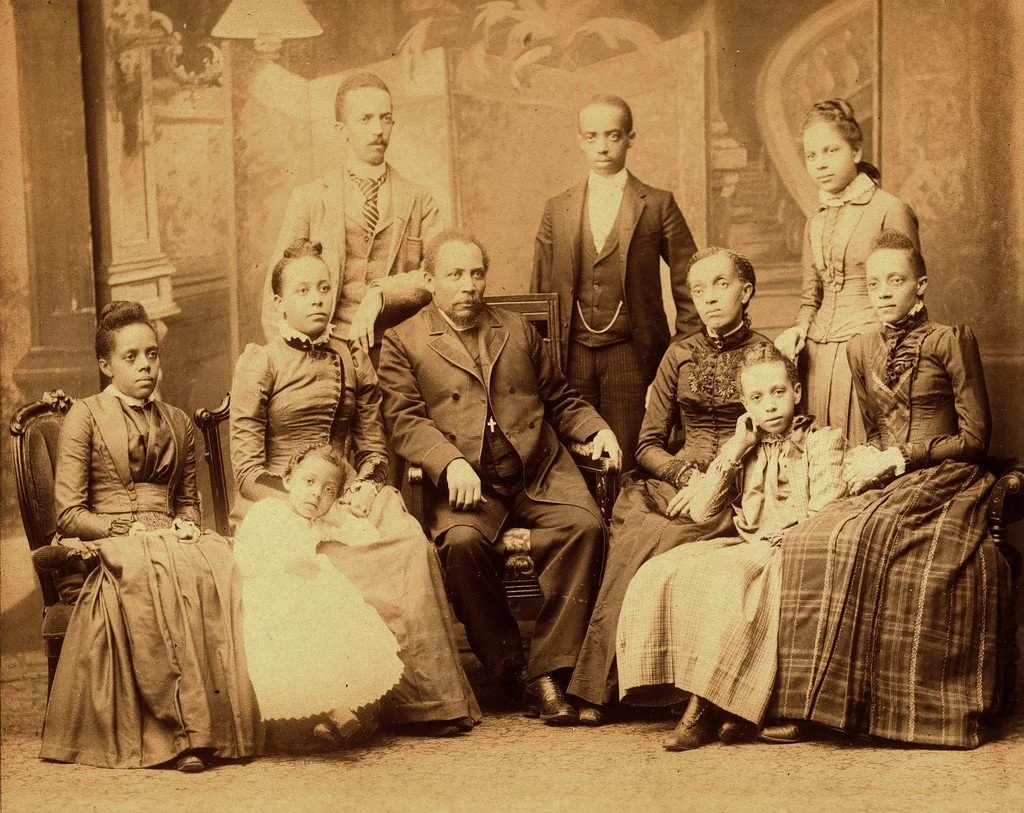
HISTORY: Uplifting the Tanner Family Legacy in North Central Philadelphia
About Henry Ossawa Tanner (1859 - 1937)
Historic American Buildings Survey, C. (1933) Henry O. Tanner House,West Diamond Street, Philadelphia, Philadelphia County, PA. Pennsylvania Philadelphia County Philadelphia, 1933. Documentation Compiled After. [Photograph] Retrieved from the Library of Congress,
Recognized as “the most distinguished African-American artist of the nineteenth century”, Henry Ossawa Tanner (1859-1937) forged a path to international success, powerfully influencing younger black artists who came after him. Henry Ossawa Tanner was 13 when his father moved the family to the house at 2908 W. Diamond Street, not far from East Fairmount Park. Tanner professed his origin story as an artist by recounting walking around Fairmount Park with his father, Benjamin Tucker Tanner, and witnessing someone painting a landscape. He decided at that moment to become an artist. In his own words:
“It was this simple event that, as it were, set me on fire. Like many children, I had drawn upon my slate to the loss of my lessons, or all over the fences to the detriment of the landscape, but never had it crossed my mind that I should be an artist, nor had I ever wished to be. But, after seeing this artist at work for an hour, it was decided on the spot, by me at least, that I would become one, and I assure you it was no ordinary one I had in mind.”
Henry Ossawa Tanner; His Boyhood Dream Comes True / Faith Ringgold
Expanding The Historic Tanner House Family Significance
Tanner Family Group Portrait (1890). UPT 50 A374S, Alexander Family Papers, Box 76, folder 5. University of Pennsylvania: University Archives Image Collection
As initially reported by the Philadelphia Inquirer, there’s more to the history of the House that surrounds and informs Henry Ossawa Tanner. His father, Benjamin Tucker Tanner, moved to 2908 W. Diamond St. after being appointed to lead the founding church of the African Episcopal Methodist faith—Mother Bethel AME —in 1872. He would eventually retire from ministerial duty to serve as editor for the nationally heralded Christian Recorder, the oldest existing periodical published by African-Americans. Tanner’s mother Sarah Elizabeth Miller Tanner self-emancipated from enslavement as a child with the support of the Pennsylvania Abolition Society, reinforcing Philadelphia’s rich Underground Railroad tradition. We must also bring forward Henry’s brilliant younger sister, Dr. Halle Tanner Dillon Johnson. She earned an MD with high honors in 1891 from the Women’s Medical College of Pennsylvania, becoming a pioneering black women physician in the United States. She would go on to become the first woman of any race to be licensed to practice medicine in Alabama, as she personally invited by family friend Booker T. Washington to start the Nursing School at Tuskegee Institute.
Henry Ossawa Tanner’s niece, Sadie T. M. Alexander, for whom the Penn Alexander School in West Philadelphia is named, was born in the Diamond Street home and returned to live there while pursuing her multiple degrees from the University of Pennsylvania. While an undergraduate, the home served as a convening space for the Gamma Chapter of Delta Sigma Theta Sorority, Inc. The chapter was the third Delta chapter and the first founded on a predominantly white campus. Sadie would go on to become the sorority’s first national president from 1919 to 1923. It’s no surprise that descendant Rae Alexander-Minter recalled that historian Carter G. Woodson dubbed the Tanner/Alexander family home at 2908 W. Diamond St as “the center of the Black intellectual community in Philadelphia” during its heyday.
Film of the European trip of Raymond Pace Alexander and Sadie Tanner Mossell Alexander in 1930. Primarily footage of Paris and Versailles. Includes Sadie’s uncle, the artist Henry Ossawa Tanner in addition to the following people: Stanley Kisingiri, Mary Church Terrell, Clarence Cameron White, Joel Augustus Rogers.


